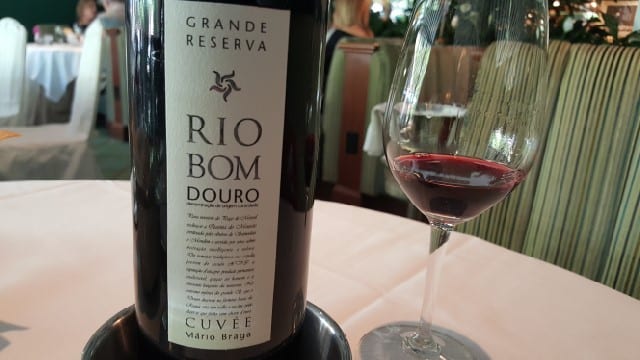
20 Sep Quinta do Mourão: A Young Tradition
This story originally appeared in the Napa Valley Register.
Miguel Braga was 10 years old when his father, Mario Braga, purchased Quinta do Mourão, as well as four other properties, in the Douro in Portugal.
It was 1972 and Miguel spent every summer working on the farm. As much as he loved being out on the farm, he went to study economics and, as guided by his father, went to work in economics. Miguel worked as a financial holder but every September he would return to the Douro on vacation to work harvest.
In 1999, Mario Braga passed away, and Miguel worked his first harvest without his father. Until then, they had been making what Miguel called “generalist” wine. They owned their own vineyards and made Port that they would then sell to one of the larger producers to blend into a final product.
But Miguel realized that they would be able to get a better price on selling bottles instead of selling the juice. In 2000, he decided to produce and bottle wine, and to honor his father and he named it Mário Braga Herdeiros, translated to “the Heirs of Mário Braga.” Miguel made his first dry wine in 2001 and came to market in 2003. By 2004, Miguel left his job as an economist and devoted himself full-time to the winery.
That same year, in honor of his father, Miguel created the 2004 Quinta do Mourão Douro Rio Bom Grand Reserva Cuvee Mario Braga, a dry wine produced with touriga franca and touriga nacional, two grapes used to make port. Produced five years after his father died and with the five-prong image on the label, symbolism is not lost on this wine. Braga has five letters in the name and the family owns five farms.
The grapes were harvested in 2004, five years after they started the family winery using five different grapes, one from each of the farms. The wine was bottled in 2009, five years after harvest, and then released in 2014, five years later. While the wine is not fortified, like Port, is has aromas similar to port, including cedar and tobacco and on the palate it is balanced with elegant acidity.
While Rio Bom are the names of the family’s table wines, Quinta do Mourão produces tawny Ports under the name S. Leonardo, named after a chapel on top of the hills on their property with vineyards on either side. Quinta do Mourão specializes in tawny Ports, which Miguel Braga describes as a “ménage-a-trois in the mouth.
As you taste the wine, you start with the alcohol, followed by the sweetness and then acidity comes at the end, all of which increase with age.” Tawny Ports, which age for long periods in oak casks, are typically designated as 10, 20, 30 and 40 years old.
These are averages as the wines are a blend of multiple vintages. Mário Braga Herdeiros Quinta do Mourão has 10, 20, 30, 40, and 100-year-old tawnys. The family brand may only be 45 years old but the Braga’s inherited a lot of inventory, dating to 1888, when they purchased Quinta do Mourão in 1972.
— Porto S. Leonardo 10 Years Tawny Port – With notes of tobacco and brown sugar, Braga considers this wine the most versatile. Served chilled at 44 degrees, the wine is perfect for salty food; serve it at 53 degrees and it is like a dessert wine; serve it at 60 degrees and it is a digestive wine.
— Porto S. Leonardo 40 Years Tawny Port – The blend of this wine starts with the 1948 vintage. Braga calls this his “contemplation wine” as it is a wine to drink alone or sometimes with dessert.
— Porto S. Leonardo +100 Years Tawny Port – The blend of this wine is between two vintages, 1895 and 1927, resulting in a wine that is actually a 106-year average. It is dark brown with aromas of coffee candy but is still fresh and acidity fills the palate. This wine is reminiscent of a Cognac.
— Porto S. Leonardo 50 Years White Port – Made from classic white Port grapes, this 50-year white Port tastes like light brown sugar. The acid tingles on the tongue, which stops the sweetness. This is a mouthwatering wine.
Mário Braga Herdeiros Quinta do Mourão is a small Port producer in the Douro but the aged tawny ports are available in the United States so you too can try some of these old wines.
Read the original story in the Napa Valley Register.
Discover more from Please The Palate
Subscribe to get the latest posts sent to your email.





